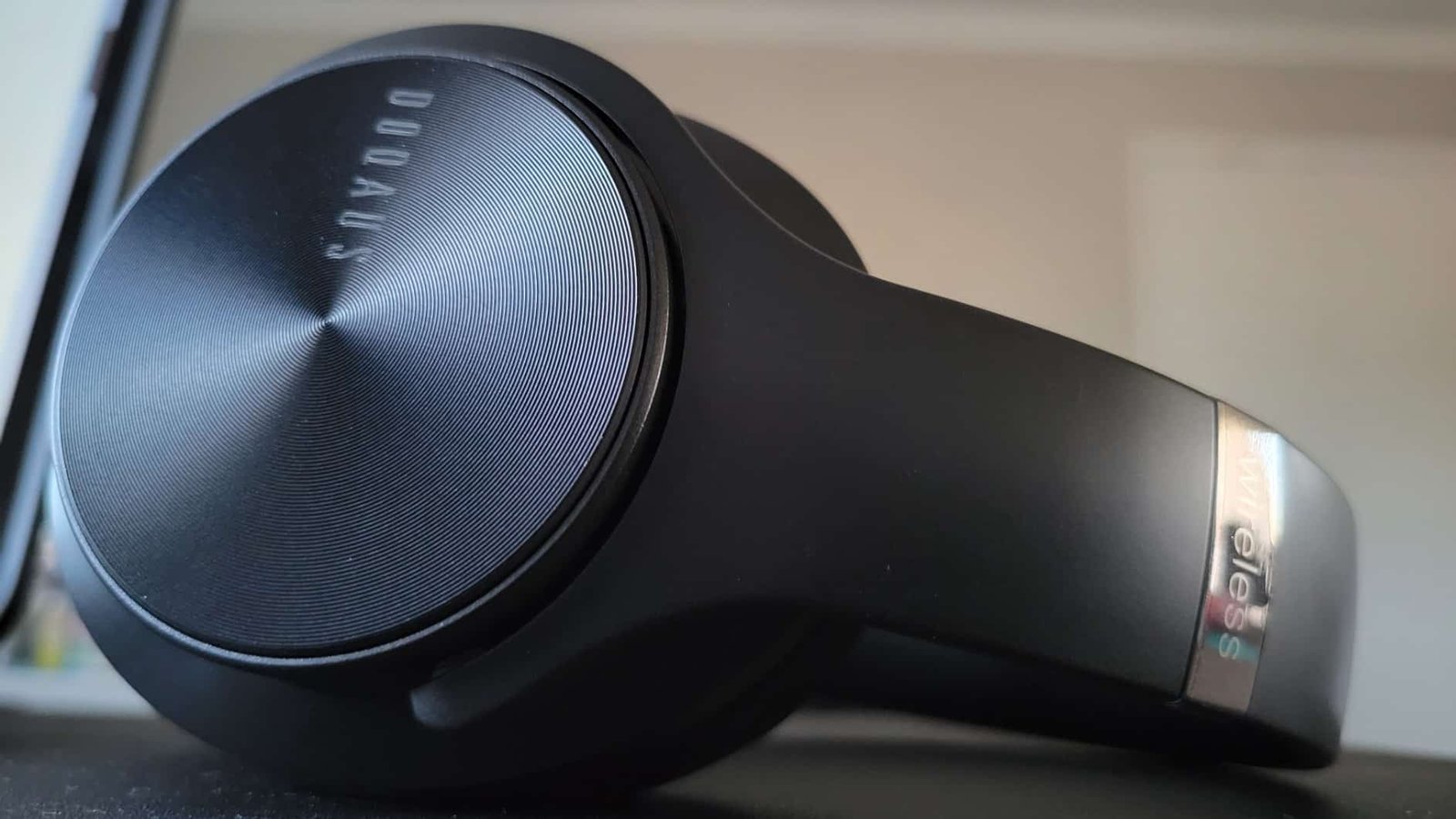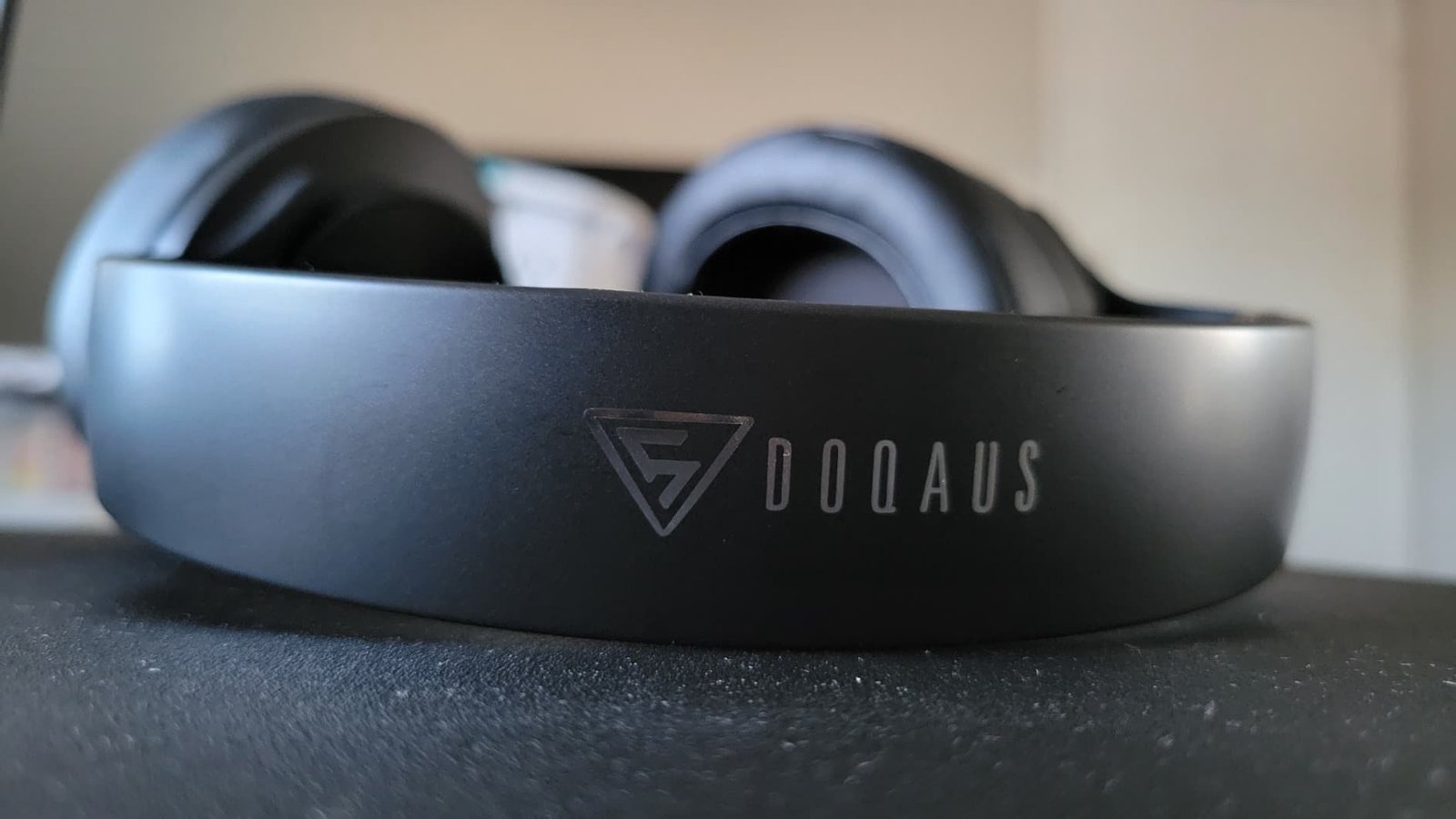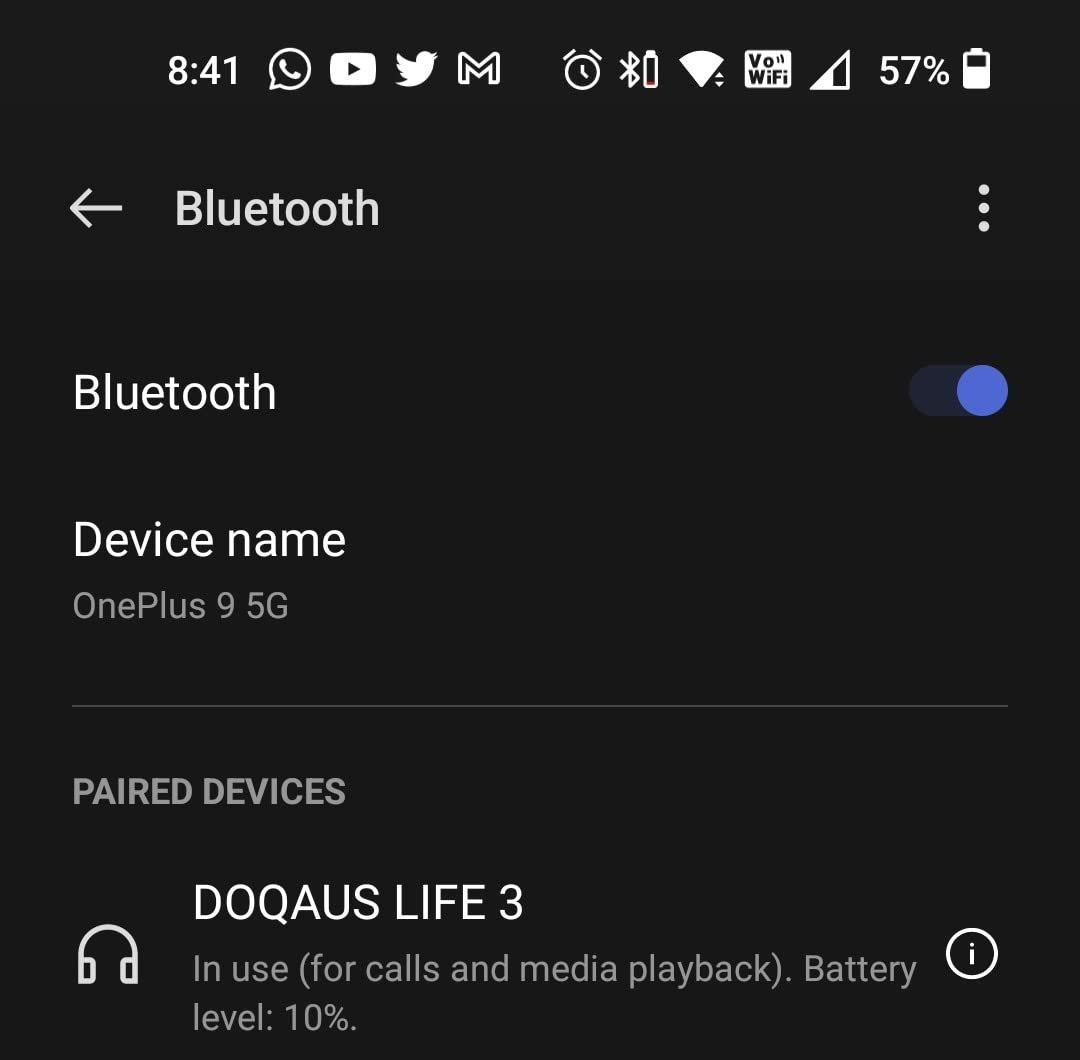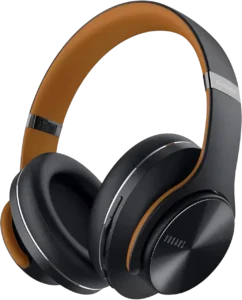It is getting harder to separate real value from disposable gadgets, especially when you want wireless convenience without a premium price tag. I spent the last three weeks living with the DOQAUS LIFE 3, a pair of over-ear Bluetooth headphones that promise marathon battery life, adjustable EQ, and a reassuringly low price.
Below is a walk-through of everything I noticed in day-to-day use, written in the same conversational style that worked so well for the Monster Mission 200 review.
Look & Feel
Straight out of the box the LIFE 3 looks neat and purposeful. The headband uses springy nylon that bends but snaps back without drama, and a thin strip of silicone hides underneath for extra cushioning. The ear cups are mostly plastic, yet the matte finish and metal-spray logo lift the first impression above “cheap.”

Comfort is the bigger story. The oval pads are wide enough to clear most ears and even make room for glasses. One owner, Jesalique JD, said she can finish a gym session or long flight with no pinching, and I had a similar experience during a two-hour train ride. If you push past the three-hour mark you will feel a gentle clamp, so giving your ears a short breather now and then is wise.
Design & Functionality
DOQAUS plays the spec sheet well for the money. Each cup hides a 40 mm dynamic driver, and a tiny switch cycles through three EQ profiles: Balanced for everyday listening, Bass Boost for extra low-end thump, and High Definition for brighter detail. The profiles are baked into the on-board firmware, so you can swap flavours without opening an app.

A 3.5 mm jack lets you go wired when the battery taps out, though there is a quirk: in wired mode the headset defaults to Bass Boost. One reviewer, Raine S., noticed the heavier low end and had to tame it with an external EQ. If you live in wired mode this could matter, but the Bluetooth side keeps your chosen profile intact.
Build quality feels solid for the price, yet not bulletproof. After twenty months Raine S. managed to crack a hinge when the headphones rode loose in a backpack. The good news is that the audio path ran through the other side, so the set kept working. Treat the folding joints with a bit of respect and you should be fine.
Bluetooth Performance
Bluetooth 5.3 holds the connection steady. I paired an Android phone, an iPad, and a Windows laptop without drama, then walked three rooms away before I heard the first hiccup. Multipoint pairing is officially supported, although one long-time owner, Emma C., found she suddenly had to switch manually between phone and laptop. I never hit that bug, but it shows that firmware and device updates can nudge behaviour over time.

Call quality is decent. The ENC microphone fades out fan noise and typing well enough for short meetings. You still need to articulate clearly; mumbling turns voices woolly, something Raine S. also pointed out. For quick chats the mic is fine, but it is not a broadcast tool.
Battery Life
This is where the LIFE 3 waves a big flag. DOQAUS claims up to ninety hours on a full charge with wireless playback. I never managed to drain it completely in a single stretch, but a five-day workweek of mixed music and calls left the gauge at thirty-eight percent. A quick ten-minute splash at the wall socket gave me roughly five extra hours, handy when you are running out the door.
Jesalique JD offered real-world proof, saying she bought the purple pair for workouts and needed her first recharge only after many months. That is hard to top in the sub-hundred-dollar bracket.
Soundstage
Budget closed-back headphones rarely impress with width, yet the LIFE 3 does a respectable job. Panning sweeps in film scores feel wider than the cup edges, and subtle reverb tails rise a little above the ear line. Depth is average; you can tell front from back but layers do not stack as neatly as they do on costlier sets.

Separation holds together until very dense tracks begin to blur. At that point you can nudge the EQ toward High Definition to lift vocals and cymbals out of the crowd. It is not night-and-day, but it helps.
Low End / Mids / Highs
Low End
Bass Boost mode gives kick drums an obvious lift and adds a rumble that action games appreciate. It is fun, though slightly boomy on acoustic pieces. Leaving the switch in Balanced mode reduces the emphasis and tightens the hit. Sub-bass is present but never sofa-shaking, which also explains why a few users wished the overall volume ceiling were higher.
Mids
Vocals sit forward enough to stay intelligible, even when the low end is busy. Guitars sound smooth rather than edgy. In High Definition mode the upper mids gain a touch of bite, useful for podcasts or older recordings that need a clarity bump.
Highs
Treble has a gentle roll-off that avoids hiss and s-sharpness. You will not chase the tiniest cymbal shimmer here, but fatigue is minimal. I listened through a full three-hour playlist of jazz and felt no need to tweak the tone.
Gaming Experience
DOQAUS might not be the first name you think of for gaming, but I took these Bluetooth headphones for a spin with a few rounds of Apex and some time in Forza, just to see what they’re made of. While these don’t have the surround profiles you’d get on something like the AOC GH401, the balanced EQ mode gives a clear enough soundstage to pick out footsteps and engine notes, and switching to bass mode adds a bit of punch when you want it. They’re not going to replace a dedicated gaming headset if you live in competitive lobbies, but I was surprised how well they kept up considering they’re aimed more at everyday use.
The fit is decent too, staying put without clamping too hard, and the long battery life means you can leave them on while hopping between games and YouTube without worrying about finding a charger. If you want a pair of headphones that can handle gaming when you need them to, without the fuss of wires, these will get the job done.
Conclusion
The DOQAUS LIFE 3 is proof that you do not need to empty your wallet to cover the everyday listening basics. Comfort is solid, battery life borders on ridiculous, and the three built-in EQ modes let you shape the presentation without fuss. Bluetooth 5.3 keeps movies in sync and calls intelligible, though the microphone will not replace a dedicated headset. Durability is acceptable if you fold and pack with care, and wired mode works provided you can live with a bass-heavy default.

Volume addicts might crave a louder ceiling, and critical listeners may find the stage a touch shallow. Yet for roughly the cost of a family take-out dinner you get ninety hours of playback, a friendly fit, and sound that beats most throw-in-the-bag alternatives.
If your priorities read: long battery, comfortable pads, useful EQ, and a price that leaves change in your pocket, the LIFE 3 deserves a spot on your shortlist.
DOQAUS LIFE 3 Bluetooth Headphones

The DOQAUS LIFE 3 Bluetooth Headphones deliver up to 90 hours of playtime, three EQ modes for customizable audio, and dual 40mm drivers for rich HiFi sound with deep bass. Featuring Bluetooth 5.3, ENC noise isolation, and ultra-soft over-ear cushions, they offer premium comfort and clear calls for music, gaming, or work.
Product SKU: DOQAUS-LIFE-3
Product Brand: DOQAUS
Product Currency: USD
Product Price: 22.99
Price Valid Until: 2030-12-31
Product In-Stock: InStock
4.4
The DOQAUS LIFE 3 is available on Amazon.